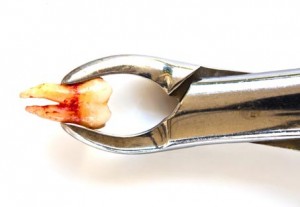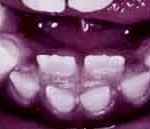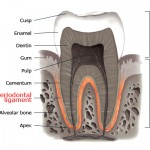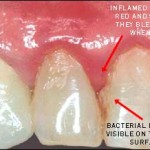Tooth extractions can be a bloody affair. Bleeding or the abnormal flow of blood is normally seen in tooth extraction but excessive bleeding can be caused by something as simple as taking aspirin to prevent heart attacks or because of some inherited blood disorders. Continue reading
Tag Archives: bleeding
How to Quickly Stop Bleeding from Tooth Extraction
After one or more teeth have been removed, you will want to do all the right things for the area to heal quickly and smoothly. This requires that a blood clot is formed. The blood clot covers the extraction site and allows the area to heal. A lot of the tips below help the blood clot to form properly and not become dislodged. Continue reading
Tips for Extraction of Baby Teeth
All people at some point in their lives will need to have their baby teeth extracted. The primary reason for extracting these teeth is to make room for permanent teeth. Other reasons for extraction are to prevent the crowding of teeth in the mouth, circumvent tooth decay or prevent injury to the inside of the jaw. No matter which of these scenarios describes your circumstances, there are a number of ways to safely extract baby teeth. Continue reading
What to Eat After Having My Teeth Extracted
Before any tooth extraction, anesthesia will be given to the patient by the dentist to numb the area. The anesthesia usually lasts for a few hours, depending on what type of anesthesia the patient is given. Because of this, it is important for the patient to avoid hot food because the patient will not feel the burn if the food is too hot. For the same reason, the patient is also not allowed to take hard, chewy food, because the patient will not realize it even when he/she accidentally bites on his/her own lips or other soft tissues. Continue reading
What to Expect During a Teeth Cleaning Appointment
A teeth cleaning appointment is also known as scaling. Every now and then every one of us would need a thorough scaling, because no matter how well we brush and floss and rinse, there will still be some minute debris left in our mouth between our teeth. These debris, after some period of time, will become hardened and these are known as calculus. There are two types of scaling – supragingival scaling, and subgingival scaling. Supragingival scaling is when the dentist only clears away the calculus that are above our gums, and can be seen in plain view. However, subgingival scaling is when the dentists cleans the calculus that are 1 – 2 mm below the gums. Sometimes, scaling is not sufficient for some patients with severe gum conditions, and root planning will be needed. Usually, root planning is needed when there is a gingival pocket more than 4 -5 mm, and there are tenacious calculus and necrotic cementum (refer to the picture to understand what is cementum) stuck to the roots of the teeth. Continue reading
Home Remedy for Inflamed Gums
Inflammed gums is also known to the dentists as gingivitis. It is a common problem, but not negligible as it can worsen. Therefore, it must be treated as promptly as possible. When there is inflammed gums, there can be bleeding from the gums either spontaneously or after a mild provokation, like after brushing the teeth. There can also be bad breath and redness of the gums, and the gums can also appear swollen.  Continue reading
A continuation on gingival flap surgery
How is the basic gingival flap surgery procedure performed
First a local anesthetic injection will be given to the site of the surgery to numb the area. This injection is the same type of injection used when extracting teeth. Therefore, no excessive sedation is necessary unless the patient is very anxious. Then, your dentist will wait a few minutes and test the area again for numbness. The dentist will than make incisions or cuts along the gum margin (neck of the tooth) . When that is done, two vertical incisions are made according to the width of the gingival flap. The gingival flap is than pulled away from the jaw bone using a forceps and a elevator. Your dentist will then examine the exposed bone and roots. If there are inflamed or swollen gum tissue between the teeth, your dentist will remove it. Depending on the situation, inflamed gum tissue may also have to be removed from holes in the bone. Continue reading
Management of bleeding after a tooth extraction
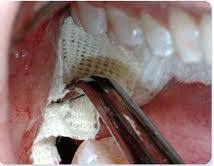 Introduction to the management of tooth extraction bleeding
Introduction to the management of tooth extraction bleeding
Many patients do not know what to expect after having there tooth extracted at the dentist. Some panic when they see some blood on their mouth whereas some do not even bother if they bleed out profusely. This is a simple instruction guide for patients to follow so that they can manage the bleeding at the surgical tooth extraction site. Continue reading
